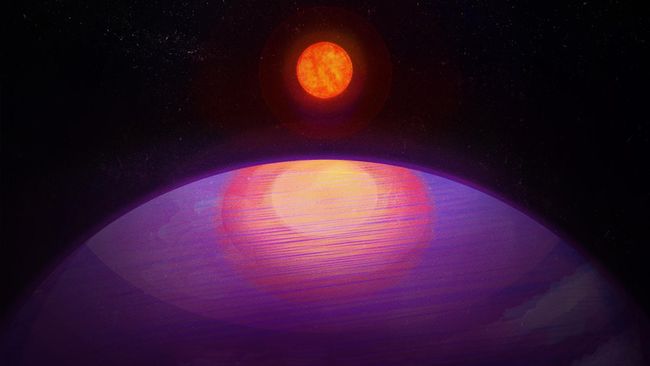This 'forbidden' exoplanet is way too massive for its star [View all]
By Robert Lea published about 10 hours ago
"This discovery really drives home the point of just how little we know about the universe. We wouldn’t expect a planet this heavy around such a low-mass star to exist."

the top half of a large purple orb raises from the bottom like an eye peering upward, its diameter spanning the bottom of the image, near its top, lighter purple in the shape of an eye, with a red/orange iris and yellow pupil. a small orange/yellow sun hangs above in the center. Illustration shows a massive planet in orbit around a diminutive star.
Illustration shows a massive planet in orbit around a diminutive star. (Image credit: Penn State)
Astronomers have discovered a massive extrasolar planet, or "exoplanet," orbiting an ultracool dwarf star that is way too small to host such a world, challenging scientists' models of how planets and planetary systems are born.
The planet in question, designated LHS 3154 b, is 13 times as massive as Earth, meaning that it has a mass similar to the solar system ice giant Neptune, yet it closely orbits a tiny dwarf star, which is nine times less massive than the sun.
This means the ratio between the Neptune-like world and its parent star — LHS 3154, which is located around 51 light-years away — is 100 times greater than the mass ratio between Earth and the sun, something researchers didn’t think was possible. This is the first time a planet with such a great mass has been found around one of the universe’s more diminutive stars.
"This discovery really drives home the point of just how little we know about the universe," research co-author and Penn State University Verne M. Willaman Professor of Astronomy and Astrophysics, Suvrath Mahadevan, said in a statement. "We wouldn’t expect a planet this heavy around such a low-mass star to exist."
More:
https://www.space.com/exoplanet-massive-hpf-star-habitable-zone-planetary-models
